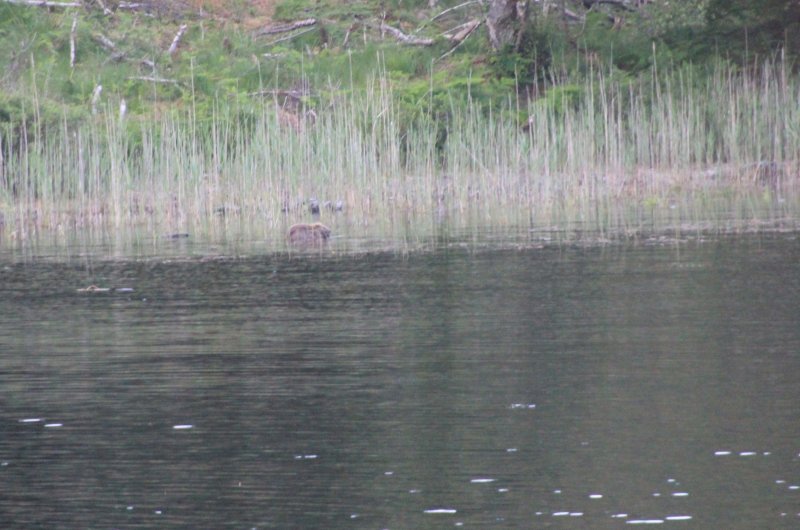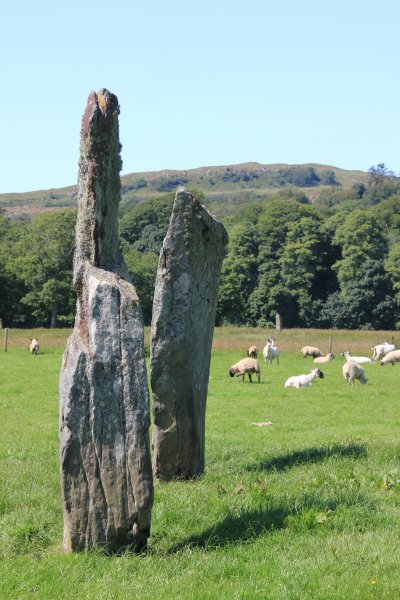Beavers and Beyond: Learning From The West
,
Along with two of my colleagues, I was recently given the opportunity to visit the West coast of Scotland as part of a sharing best practice visit. In two packed days, we visited Blarbuie Woodland Enterprise, the Scottish Beaver Trial, Auchinellan estate and the Kilmartin museum and gathered a wealth of information which we brought back to Cumbernauld.
Blarbuie Woodland Enterprise
Blarbuie Woodland Enterprise is based in the grounds of Lochgilphead’s Argyll and Bute hospital, which was built as a sanctuary in the 19th century for those with mental health needs. The Blarbuie Woodland enterprise is a charity who manages the woodlands surrounding the hospital with the help of volunteers from all walks of the local community. Their core aim is to provide their volunteer trainees with meaningful work and training to help improve their mental and physical wellbeing. We joined them on their Open Day, where they were raising awareness of the project with people from the area. There was loads going on and we soon pitched in to help, running an impromptu guided bug hunt to get the kids exploring for mini-beasts.

Combining volunteering outdoors and mental health improvement isn’t a new idea but it is one that has been shown time and again to be particularly effective. Soon, I will be running a pilot for people in Cumbernauld, offering them chances to get out into the reserves and reflect upon their wellbeing so it was interesting to see how successful Blarbuie has been, developing long-lasting links within the local community; keep following our blogs to find out more soon! Following in Blarbuie’s footsteps, here in the Cumbernauld Living Landscape we’ll continue building relationships with other charities and communities that will strengthen the provision of healthy places for happier people.
The Scottish Beaver Trial
The Scottish Beaver Trial is an exciting project that has reintroduced the keystone species of beavers back to Scotland after over 400 years of extinction in the UK. Starting in 2008, this 5 year trial was a partnership between the Scottish Wildlife Trust, Royal Zoological Society of Scotland and Forestry Commission Scotland to assess the impact of these animals within the Knapdale forest. By coppicing surrounding trees to collect bark to eat and by damming certain areas, the beavers are able to create wetland habitats that attract and support many other species.
We met with Oly, the education ranger, and a volunteer from the local area for a guided walk around the lochs the beavers have been introduced into. They’ve been successful so far and have managed to maintain a stable population, with the news of a kit being spotted breaking just as we were visiting. We didn’t see the new kit, but were really lucky to see Eoghann, the kit’s father, enjoying a meal of roots on the opposite side of the bank to where we stood.

The trial period for the official beaver trial has now ended, and we’re waiting to hear from the Scottish Government whether beavers will be accepted as a native species and allowed to remain within Knapdale – fingers crossed!
The Auchinellan Estate
Auchinellan is a 900 acre private estate, comprising of hillsides, woodlands and grazing. It was interesting to meet its manager, Phil, who has spent a significant amount of time trying to get the woodland to a healthy state. Opening up glades has allowed for more natural regeneration to happen on the forest’s floor, allowing younger trees grow. Cumbernauld, whose trees were mostly planted at the same time, faces similar challenges: as the trees age at the same rate, so too they begin to decline at the same time, placing increased pressures on our reserve manager and team. Removing trees (particularly non-native species) promotes a healthier woodland, with a mix of older and younger trees which are able to support wider biodiversity.
The Kilmartin Museum
Kilmartin museum celebrates the rich archaeological history within Kilmartin Glen, where standing stones and burial cairns remain as testament to the importance of the glen to Prehistoric and Neolithic people. We took part in a fascinating guided walk, even getting the chance to enter one of the burial cairns which had housed someone encased by multiple engraved stone slabs (whether this was done out of reverence or fear we’ll never know!) It was an amazing experience, but perhaps most interesting is that these walks are run entirely by local volunteers. These knowledgeable folk spend at least two hours a week walking round with tourists, sharing their heritage simply because they really love and are proud of where they live. We’ve definitely got dedicated people like this within Cumbernauld, but it would be great to continue developing the community spirit and pride here. Maybe we’re a little biased as part of the Living Landscape team, but we think that Cumbernauld’s greenspaces have got just as much to boast about and share with both locals and visitors alike.

I’d like to thank our hosts over in beautiful Knapdale and hope to see you over in Cumbernauld soon!
